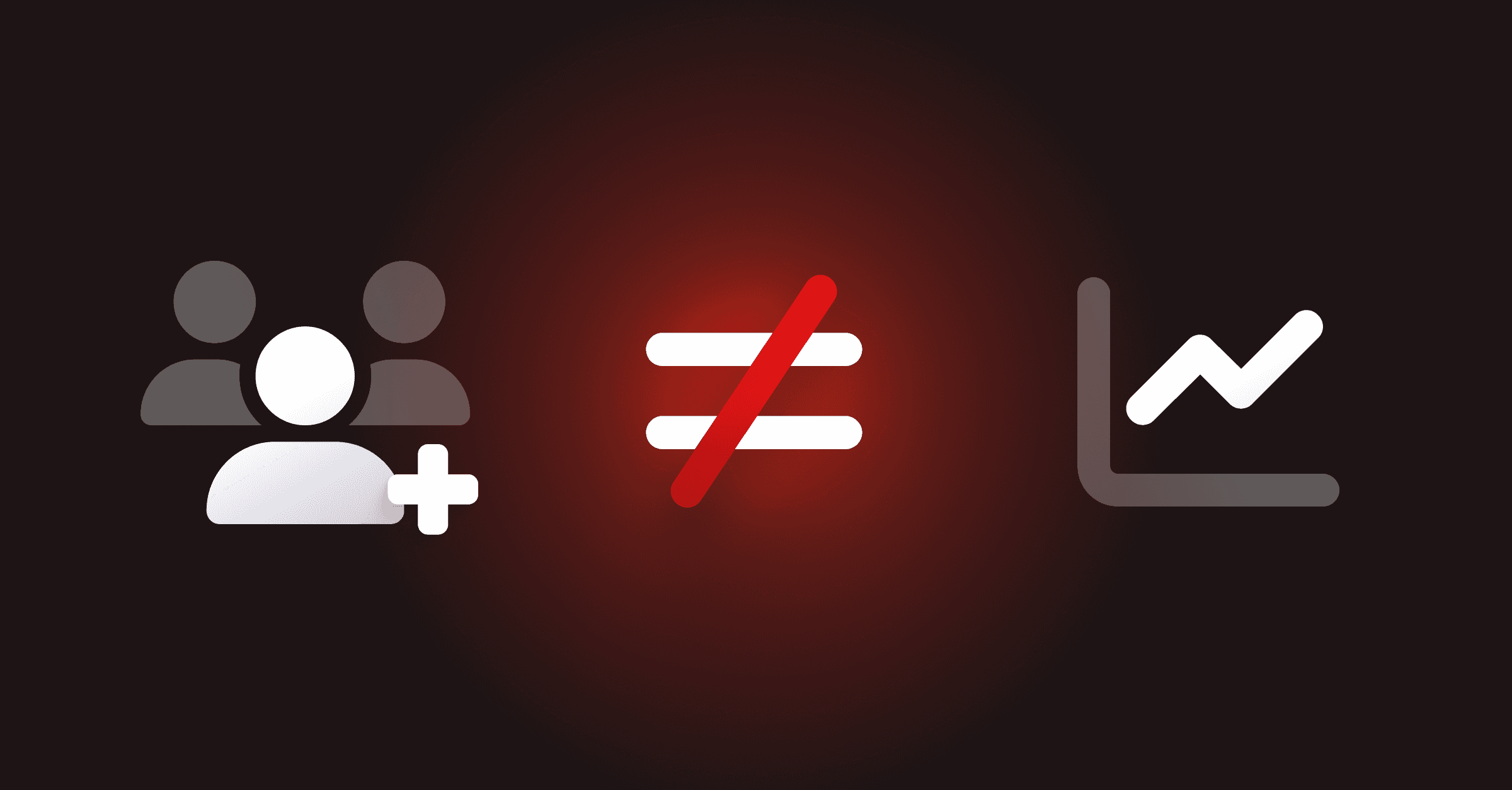Why your Ag retail business needs better systems, not more staff

John Brubaker
Cumbersome spreadsheets. End-of-season reconciliation nightmares. Uncertainty around information accuracy. Tedious calculation processes.
Too often, Ag retail leaders look at these problems and think: Let’s just hire more people.
But more people doesn’t always equal more efficiency.
In healthcare, for example, AI scheduling tools offer more efficient ways to tackle an administrative workload than simply hiring more people. One study also found that battery manufacturer Panasonic found that productivity actually decreased after hiring past a certain number of new employees.
Even outside HR departments, there are plenty of examples of when adding more volume just causes more issues: Research has shown that adding more highway lanes can actually cause more traffic congestion, for instance. In sports, a football team with 450 plays in their playbook will probably deal with a lot more miscommunication and turnovers than a team with a dialed-in 100 plays to pick from.
And if you’ve ever been to a restaurant that tries to offer every type of cuisine imaginable … you’ll know that sometimes, less is just more.
It’s a similar story in Ag retail: simply throwing more bodies onto a process problem doesn’t actually simplify your processes, improve your efficiency, or help your profitability. If anything, this strategy complicates your long-term growth. And eventually, you’re going to need to fix the underlying, core process problems.
“We just need a bigger team”
In Ag retail, when there’s a system inefficiency or when a rebate reconciliation process yields inaccurate results, the tendency has been to just hire more people.
Surely with more people on the problem, we can sort through the mess faster. All we need is more manpower.
But this is usually just a Band-Aid solution. Putting more employees into an inefficient system papers over the core problem — and doesn’t actually make the underlying system better. That’s a recipe for more tedious work, frustrated employees, more data inaccuracies, and inefficiencies that rob your bottom line.
Hiring more people might even exacerbate your problem. Fundamentally, a bigger team increases the potential for more crossed wires.
If there’s a miscommunication on a team of two people, it probably won’t take that long to sort out. But doubling that headcount from two to four essentially quadruples the lines of communication that can get tangled. A miscommunication or data discrepancy in that environment is harder to unravel.
There are software solutions that can help boost internal systems. But leadership is often hesitant to invest, because they don’t think about the long-term ramifications of hiring more people. The common train of thought goes something like:
Why would I buy a $250K technology when I could just hire two or three additional employees?
At a certain organization size, maybe that’s okay. But as you grow in the industry, there’s a ceiling for that solution.
Why just hiring more people is a scaling problem
When you’re a $25M company and you discover an issue with your systems or processes, maybe you can fix it with a couple extra people on staff.
But when you grow to a $100M company, the amount of people you need to hire to fix an issue balloons. Instead of needing two additional employees, you might need 10. Or 20. Now think about how much you’d pay for 10 to 20 extra salaries, and you can see how process problems can quickly eat into your bottom line.
Let’s jump another rung up the scaling ladder: If you’re a $250M company, the conundrum deepens. You’re just not going to solve a problem with additional people.
Bloated staffs who don’t have efficient tools and systems at hand to do their work not only causes internal frustration — but it’s also a “kick the can down the road” mentality that will only come back to bite you.
Inevitably, you’re going to get to a point where you need to fix the problem with better processes and systems — not just extra people. The sooner you do this, the more you can prepare for the future, proactively address process problems, and bolster your bottom line.
Integrating technology and streamlining systems isn’t just about avoiding headaches — but about getting your organization ready for future growth. Plus, fixing your process issues early on as an organization will allow you to improve efficiency — and profitability — earlier. That’s a helpful foundation for the future.
How digital solutions can complement a lean staff — and make employees’ lives easier
It pays to be proactive. Instead of just throwing more employees into an inefficient system, a better long-term strategy is to give your existing team additional tools to aid their work.
Technology, of course, isn’t a magic bullet. But it can:
Improve efficiency
Instead of piling manual calculations onto your team, the right software can automate a lot of this work. It can also speed up internal processes to avoid lag times and end-of-season delays.
Inject more order into your processes
Having the right digital tools can streamline your operations. And that should be music to your team’s ears — because often, this means that the technology is taking away the tedious tasks they don’t want to do anyways.
Streamline your existing team’s workload
One common objection to integrating technology is the idea that it will take away human jobs. But this doesn’t have to be the case. It just makes your team’s jobs easier and less tedious. Freeing them up from time-consuming, manual or administrative tasks that a computer can easily do means that they can focus on more strategic — and frankly, enjoyable — work. This ends up being a bigger value-add for your customers downstream.
Technology doesn’t necessarily eliminate or decrease headcount. It just makes your existing headcount more efficient.
Reduce single-person risk
When humans are responsible for 100% of your process details within your organization, that creates some risk. What happens when that person leaves or retires? The more you can rely on streamlined, systemized technology, the less you’ll scramble when turnover inevitably happens.
What can this technology look like in the Ag retail sector?
Sure, you can keep hiring more people to churn through more work, as your organization grows. But you’re not actually improving efficiency by doing that.
And at a certain point, you’ll reach a limit on how many people you can hire to make up for a bad process or system.
The right solution can simply complement your existing team. Technology can improve processes and streamline timelines in ways that a human team can’t.
This is exactly why we created Smartwyre. The platform provides:
Automatic rebate calculations, which reduces tedious work and improves accuracy
A single source of truth (rather than tracking multiple people’s manually updated spreadsheets)
Real-time visibility, so your team doesn’t waste time hunting for the most updated versions of the data they need
Technology doesn’t replace your people. It optimizes the systems in which those people work. By bolstering the tools that your team uses to do their jobs, you end up with more time savings, better bottom lines, less single-person risk, more efficiency, and better profitability.
If your organization is looking for an effective technology solution to boost your existing team’s work and mitigate the risks of inaccuracy or a key individual, reach out to the Smartwyre team today.
















